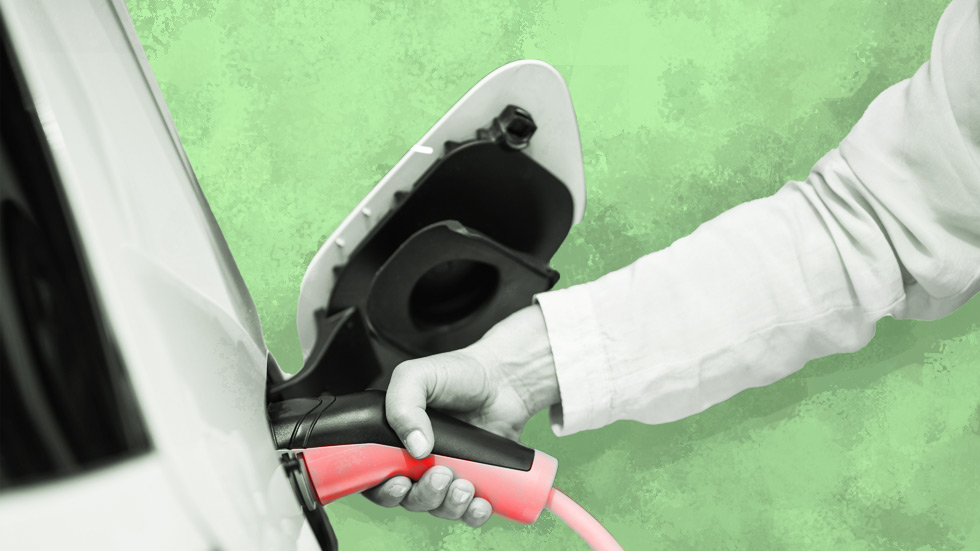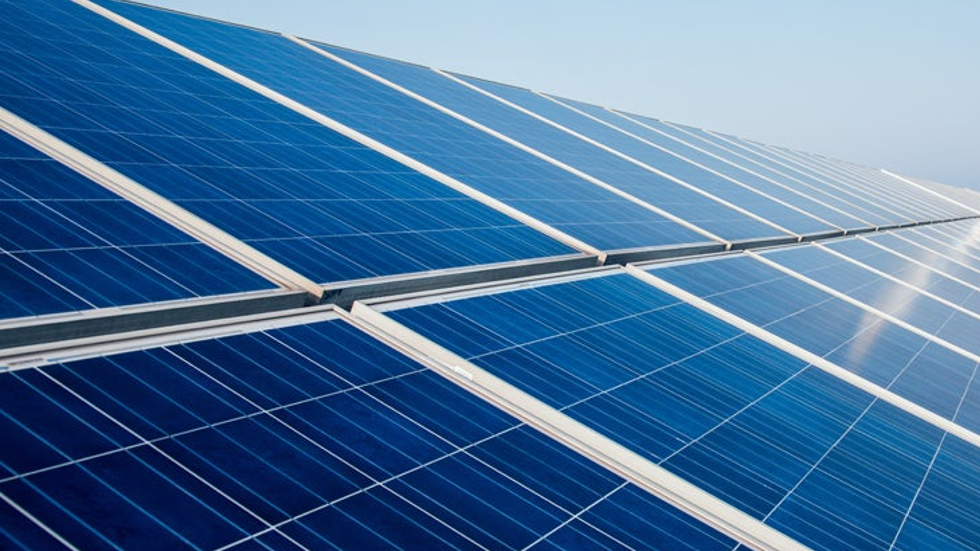Equilibrium/Sustainability — Microplastics make pollutants more toxic

Today is Thursday. Welcome to Equilibrium, a newsletter that tracks the growing global battle over the future of sustainability. Subscribe here: digital-release.thehill.com/newsletter-signup.
Microplastics can increase the toxicity of organic pollutants in their surrounding environment tenfold, a new study from Tel Aviv University has found.
These tiny particles, which range from microscopic to a few millimeters in size, are found nearly everywhere, such as wells, soil, food products and glaciers in the North Pole, according to the scientists, who published their study in the journal Chemosphere.
The minuscule bits of plastic can act as “a kind of magnet for environmental pollutants, ‘ferrying’ them through our digestive tract, and releasing them in a concentrated form,” according to the authors. And through this pathway, microplastics can cause severe damage to the digestive system and overall human health, the researchers observed.
“This is another painful reminder of the dire consequences of polluting the marine and terrestrial environment with hazardous industrial waste, which has unfortunately been saturated with plastic in recent decades,” lead author Dr. Ines Zucker, of Tel Aviv University, said in a statement.
Today we’ll look at a new effort to repurpose old electric vehicle batteries and examine two innovative and unexpected uses for solar panels.
For Equilibrium, we are Saul Elbein and Sharon Udasin. Please send tips or comments to Saul at selbein@digital-release.thehill.com or Sharon at sudasin@digital-release.thehill.com. Follow us on Twitter: @saul_elbein and @sharonudasin.
Let’s get to it.
Ford, Volvo partner to revitalize EV batteries

Ford Motor Company and Volvo Cars are collaborating with an e-waste startup to launch a first-of-its-kind electric vehicle (EV) battery recycling program in California, the companies announced Thursday.
The companies will work to create “efficient, safe and effective recovery pathways for end-of-life hybrid and electric vehicle battery packs,” stated a news release from the startup, Redwood Materials.
While Ford and Volvo are the first carmakers to offer their support to the program, the operation will accept all lithium-ion and nickel metal hydride batteries in California, the partners added.
First words: “We are excited to be strengthening our partnership with Redwood Materials in identifying solutions for electric vehicle batteries that have reached the end of their useful lives,” Ford president and CEO Jim Farley said in a statement Thursday.
A budding relationship: An initial partnership between Ford and the Nevada-based startup — which recycles lithium-ion batteries, phones, laptops power tools and other e-waste — began in September.
At the time, the two companies agreed to determine jointly how the companies could create pathways for aging Ford and Lincoln vehicles to be recycled into battery materials and locally manufactured EVs, according to Thursday’s news release.
Recovering precious metals: In September, Ford said it had invested $50 million in Redwood to help expand the startup’s manufacturing footprint as part of the corporation’s overall plan to invest more than $30 billion in electrification through 2025.
On average, according to Redwood, the startup’s technology can recover more than 95 percent of elements like lithium, nickel, cobalt and copper.
Bringing Tesla EV expertise to battery reuse: JB Straubel, Redwood’s co-founder and CEO, also co-founded Tesla, where he served as chief technical officer and then in an advisory role through 2019.
While Redwood’s relationship with Volvo is new, the startup described the automaker as “similarly focused on ensuring responsible and secure pathways for end-of-life batteries.”
RAMPING UP RECYCLING, CREATING PATHWAYS FOR BATTERY COLLECTION
Each year, Redwood receives about 6 gigawatt-hours of lithium-ion batteries — the equivalent of 60,000 EVs, and the brunt of North America’s recycled lithium-ion battery supply, according to the company.
The startup said it is ramping up its recycling processes as the first wave of used-up EVs begins to come off the country’s roads, while identifying pathways to collect used battery packs.
The new initiative will take root in the Golden State: California was chosen for the program since it has been a consistent leader in the transition to electric transportation and houses, the companies said.
From safe collection to domestic production: Redwood and the automakers will be working directly with dealers and dismantlers in the state to recover the end-of-life packs and then safely package, transport and recycle the batteries at the startup’s facilities in Northern Nevada.
Following this process, Redwood will then return high-quality, recycled materials to the domestic battery production market, the company said.
Last words: Farley, with Ford, lauded the Redwood team for bringing what he described as “world-class technology and know-how” to their joint initiative.
“This new program with Redwood Materials will help Ford lead America’s transition to sustainable and carbon-neutral EV manufacturing and ultimately help make electric vehicles more environmentally responsible and affordable for our customers,” Farley added.
COMING SOON FROM THE HILL
We’ve got you covered morning, noon, and night! Be first to sign up for the debut of The Hill’s Evening Report.
Solar panels used to transmit data underwater

A Chinese research team has figured out an unconventional function for solar panels: using them to wirelessly transmit data underwater, as detailed in a new study.
That offers a potential underwater communication source that could work faster with both fewer delays and power demand than current radio or sonar communication, according to the study, published in The Optical Society’s monthly journal Optica.
Such a tool could open up new opportunities for oceanic conservation and exploration, while demonstrating the capability of solar technology to extend beyond strict power-gathering and into new applications.
First words: “There is a critical need for efficient underwater communication to meet the increasing demands of underwater data exchange in worldwide ocean protection activities,” research team leader Jing Xu of China’s Zhejiang University said in a statement.
Why? Coral reef conservation, for example, calls on a complex array of surface ships, divers, manned submarines, fixed underwater sensors and remote-piloted submersibles — all attempting to stay in touch and transmit data back and forth.
Light transmits information much faster, and at much higher bandwidths, than current radio methods like hydrophones. But to transmit effectively, the sender and receiver have to be perfectly aligned — a nearly impossible feat in the turbulent environment of, for example, a coral reef.
Enter the solar panels: The Chinese team realized that underwater solar panels offered a means of getting around this problem: because they are designed to capture light and turn it into electricity, they can easily be repurposed to transmit information.
Their comparatively wide photovoltaic surface also acts like a miniature radio dish, providing a broader surface to receive signals.
Plugging in: By modifying an off-the-shelf solar panel, the researchers were able to build a transmitting array that — in ideal lab conditions — could transmit data at 150 megabytes per second across 35 meters, or about 115 feet.
Does that really translate to the ocean? Not at all. But it proves that using solar panels for underwater communication is possible. The team’s next step is to experiment with weaker signals, which will allow them to begin simulating how the system works at long distances, with movement or in muddy water.
Future implications: “Because solar cells are mass produced, the proposed scheme is quite cost effective,” Xu said, adding that the system could potentially be used to transmit data overland as well, with LEDs or similar sources transmitting the information and solar panels catching it.
SOLAR POWERED CARBON FUELS
On the other side of the world, a team at Sweden’s Lund University has gotten a step closer in the quest to turn carbon dioxide into usable fuel, publishing their findings in Nature Communications.
A big quest: Enough solar energy hits the Earth every hour to power humanity for a year, leaving scientists dreaming of ways to tap that energy. Ideally, they could harness that power to pull carbon dioxide out of the atmosphere and, ideally, do something useful with it, a news release accompanying the study said.
Did they pull that off? No. But they are a step closer. By adding catalysts to a porous material called covalent organic framework — which efficiently absorbs sunlight — they succeeded in breaking down carbon dioxide into carbon monoxide without any additional energy.
That’s only a very early step, researchers caution. “Before we can start thinking about a carbon dioxide converter, many more steps need to be taken, and probably even our first two must be refined. But we have identified a very promising direction to take,” said Tönu Pullerits of Lund University.
Takeaway: While very different, both the Lund and Zhejiang University studies suggest something similar: that the mainstreaming of solar energy is bleeding out into previously unexpected industrial applications. They’re also a reminder that science moves slowly — until, suddenly and unexpectedly, it yields a breakthrough.
Thermal Thursday

Oil majors deceive on decarbonization, Europe crisis may be good news for LNG sellers, and students argue fossil fuel investments are “illegal.”
Oil giants’ big talk on decarbonization not matched by action: study
- Energy giants BP, Chevron, Shell and ExxonMobil spent the period from 2009 to 2020 showed a new affection for words like “climate,” “low-carbon” and “transition,” as well as much-publicized pledges about their move towards decarbonization, according to a study in PLOS One. But that rhetorical push is misleading, researchers found, as the companies’ financial records show that “the transition to clean energy business models is not occurring.”
European energy crisis benefitting US LNG suppliers, traders
- Europe’s ongoing energy crisis — due to Russian gas supply shortfalls and the threat of a Moscow-Kyiv conflict — is benefiting American suppliers of liquefied natural gas (LNG), traders who have shipped the gas to Europe “at historically high prices” and money managers who have profited from the volatility of international gas markets, The Wall Street Journal reported.
Students slam fossil fuel investments in university endowments as ‘illegal’
- Students at an array of top-tier universities — like Stanford, Princeton and MIT — are pushing against their university endowments to divest from fossil fuels using an innovative strategy: arguing before their state attorneys general that “the schools’ contributions to global warming are illegal,” The Mercury News reported.
Please visit The Hill’s sustainability section online for the web version of this newsletter and more stories. We’ll see you on Friday.
Copyright 2023 Nexstar Media Inc. All rights reserved. This material may not be published, broadcast, rewritten, or redistributed.

